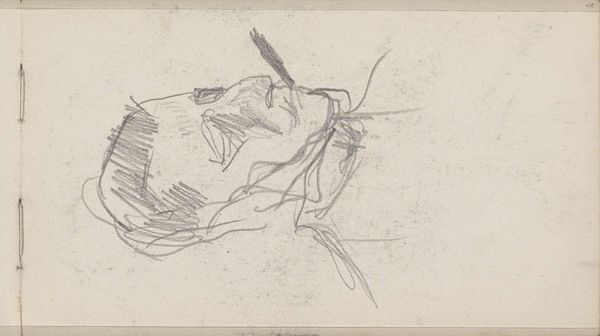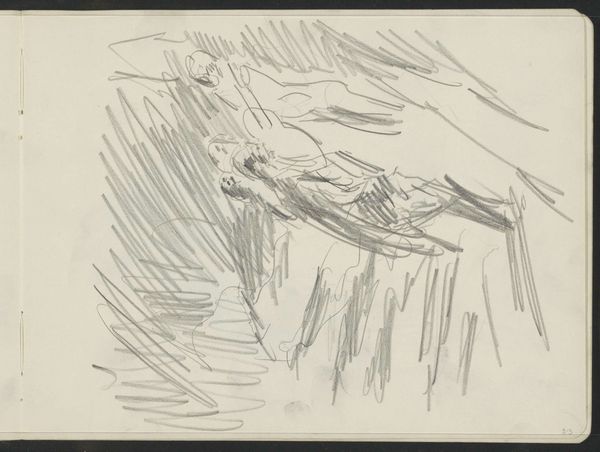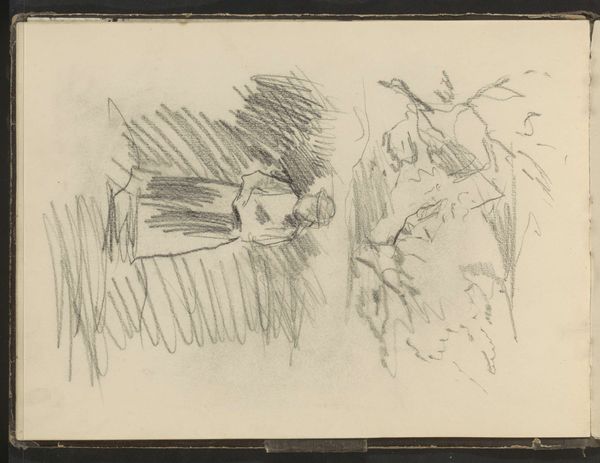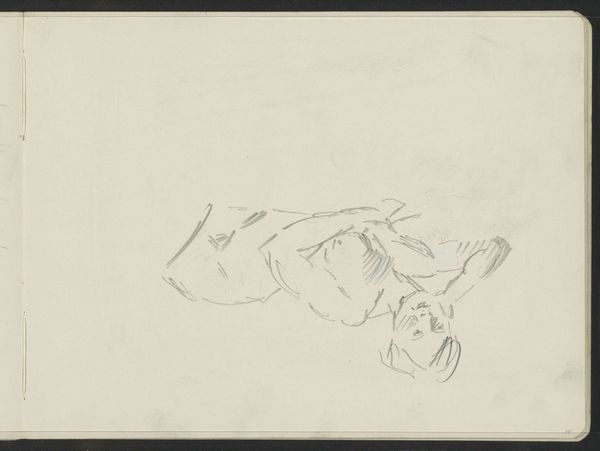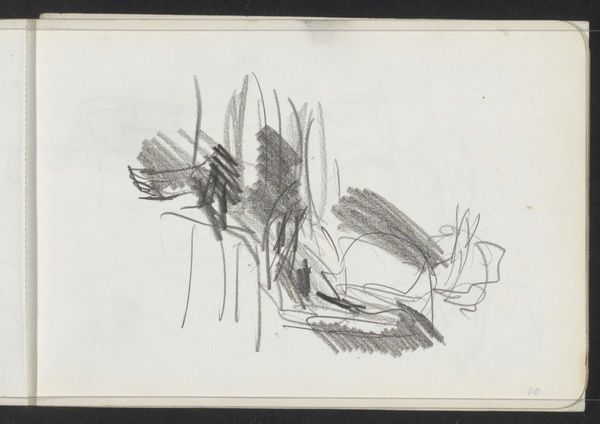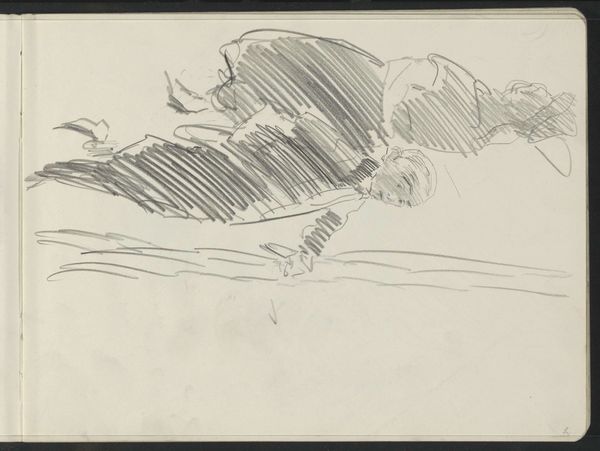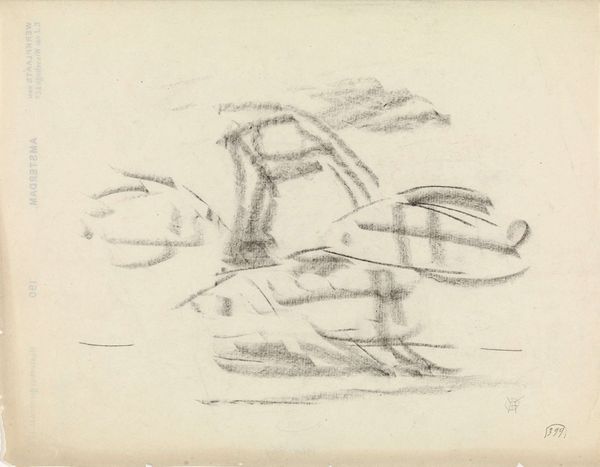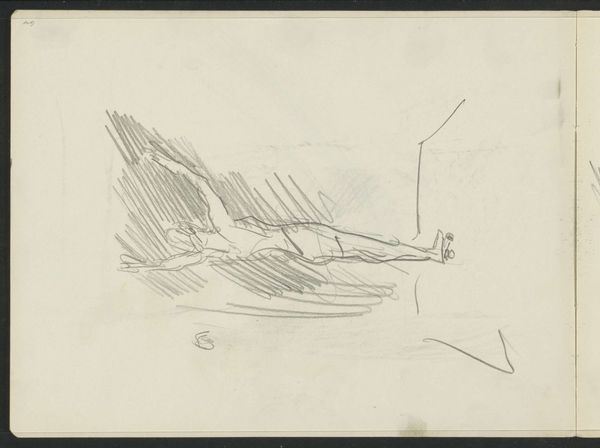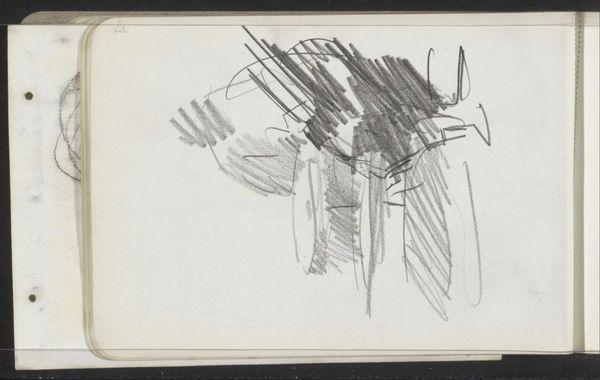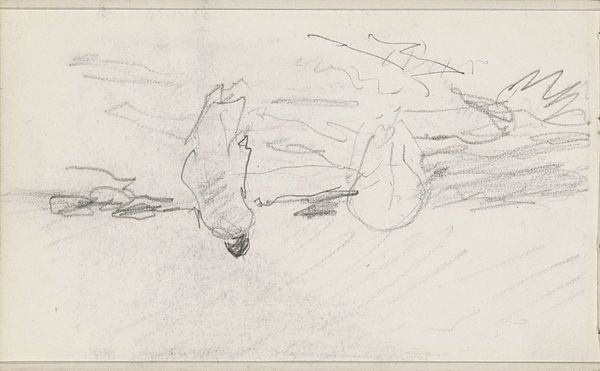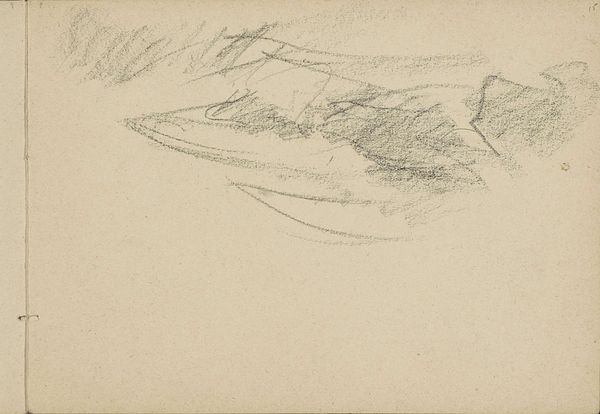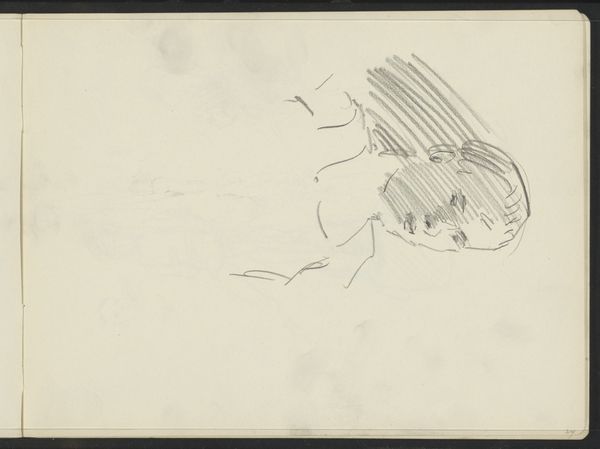
drawing, pencil, graphite
#
drawing
#
ink drawing
#
pen illustration
#
pen sketch
#
figuration
#
personal sketchbook
#
ink drawing experimentation
#
pen-ink sketch
#
pencil
#
expressionism
#
thin linework
#
pen work
#
graphite
#
sketchbook drawing
#
sketchbook art
#
modernism
Copyright: Rijks Museum: Open Domain
Curator: This sketch by Isaac Israels, titled "Groep figuren, mogelijk op het toneel" or "Group of Figures, Possibly on Stage," was created sometime between 1915 and 1925. It’s currently held at the Rijksmuseum and primarily rendered in pencil and graphite. The effect is very loose and preliminary. What are your immediate impressions? Editor: Overwhelming energy, almost frantic. I sense figures in motion, a scene unfolding. The loose, swirling lines evoke a feeling of immediacy, like a fleeting moment captured on paper. The figures feel obscured by the chaotic line work; I am drawn in, but it is slightly unsettling. Curator: Indeed, Israels was known for capturing modern life's transient moments. The visible underdrawing and reworking indicate he wasn't striving for precision here. Instead, it seems, he wanted to grasp the essence of movement, perhaps the ephemeral nature of theatrical performance. I see hints of tall figures on stage in front of some kind of architectural details. Editor: Right, this speaks to the theater and stage with its costumery and artifice. I immediately think about how live theatre at the time challenged social mores, often offering subtle commentary on gender, class, and political identity. One can ask: Were these bodies performing a status quo, or disrupting it? Curator: It’s difficult to know for sure, given the sketch's brevity. But consider the symbols often associated with the stage: transformation, illusion, societal reflection. These figures, shrouded in layers of pencil strokes, perhaps symbolize hidden aspects of society unveiled through performance. It is very gestural, revealing something through its incomplete qualities. Editor: Perhaps it reflects not just societal reflections but also the role of art in unveiling power dynamics within those societies. It looks unfinished and sketchy, and somehow conveys the dynamism inherent in theatrical expression, yet leaves the spectator unsure if these figures act by their own volition. Curator: That’s a compelling point – the unfinished nature reinforces the idea of an unfolding narrative. So it can be seen as a snapshot of possibilities rather than a definitive statement. Editor: Exactly. Ultimately, the power resides in its ambiguity, inviting each viewer to construct their own narrative. It reminds me that art—much like performance—always operates in context, always carries potential for subversive commentary, no matter how veiled. It makes one ponder at what other political statements were subtly hidden from censors’ eyes by artists. Curator: A thought-provoking lens through which to view this intriguing sketch. Editor: Indeed, it demonstrates art as not just depiction, but a historical record.
Comments
No comments
Be the first to comment and join the conversation on the ultimate creative platform.
